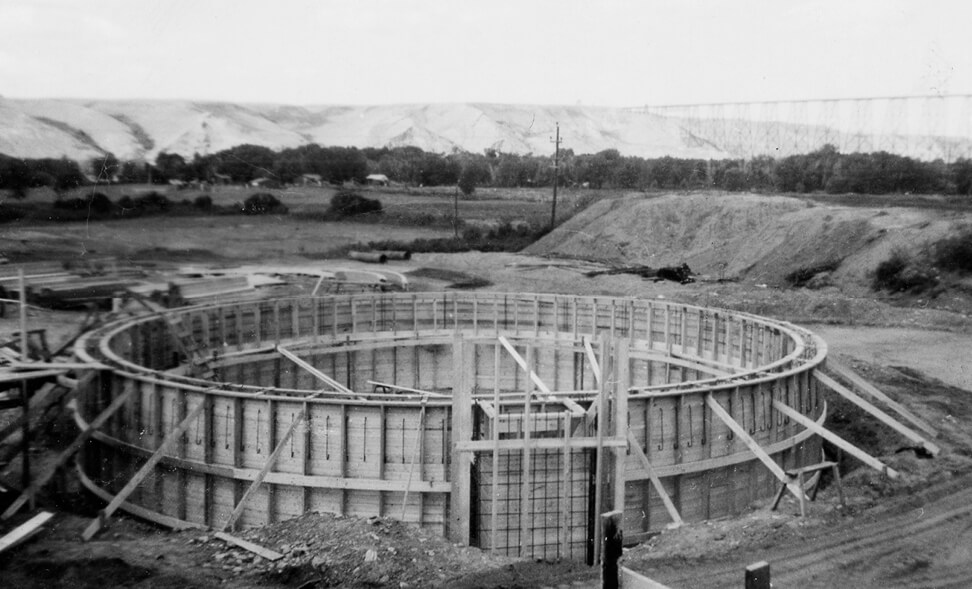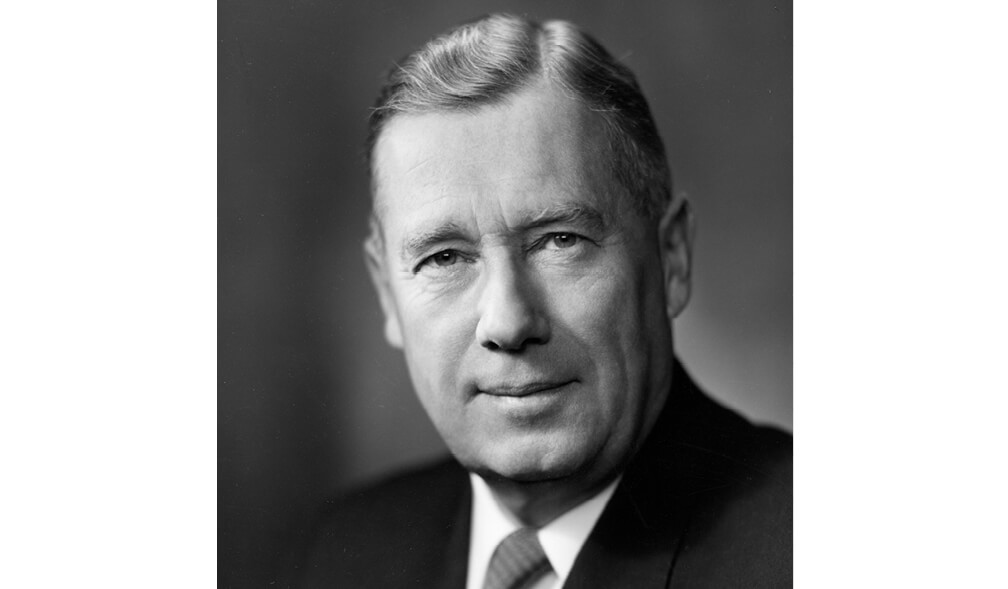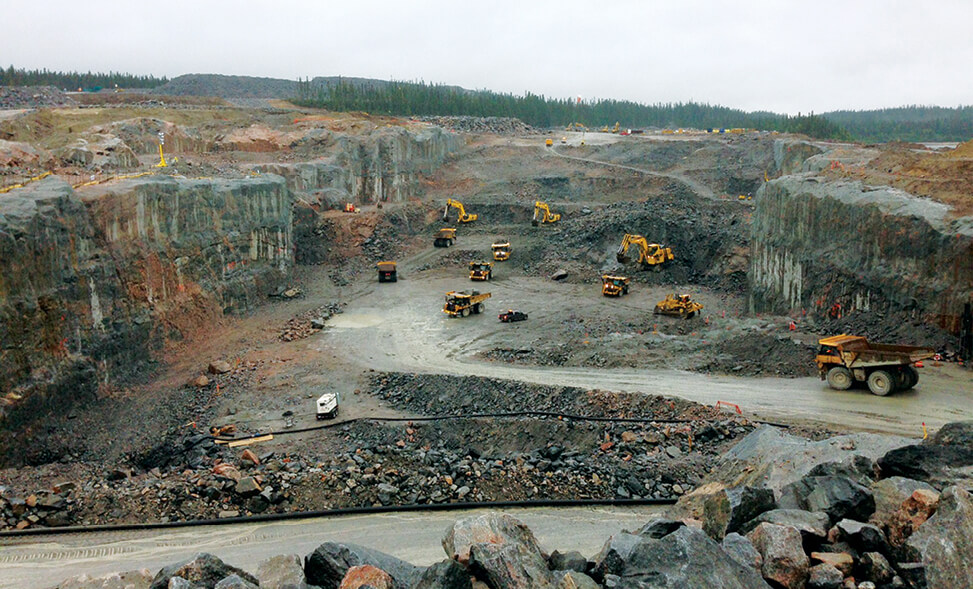History
1920
Hubert J. Bird returns from World War I as a Captain in the Canadian Engineers and establishes Bird and Woodall construction company in 1920. The company would be known as “Bird, Woodall and Simpson” from 1926.

1930
Bird Construction incorporates in Regina, and is awarded its first $1 million contract, Canadian Pacific Railway’s Regina Union Station.

1938
After securing a large project in Winnipeg for a food processing facility, the Company’s head office relocates to Winnipeg from Moose Jaw.

1939
During World War II, Bird focuses its efforts almost entirely towards military airports and army camp installations. Through these years, almost all of the administrative personnel worked seven days a week.

1945
In the mid-1940s, Bird Construction was the largest home builder in Canada.

1946
Bird begins development of the 74.7-acre Wildwood Housing Project in south Winnipeg – a revolutionary subdivision design where all the homes face a park-like area and service roads are confined to the periphery. To this day, Wildwood Park is still recognized by urban planners for its ingenuity.

1948
Bird opens an office in Alberta, where a number of projects are secured in the industrial and mining sectors.

1949
Bird Construction Company Limited goes public by issuing shares on the Winnipeg Stock Exchange to raise capital to support its ongoing operations.

1950
During the flood of the century, Hubert J. Bird and the Company play a significant role in the battle against the raging Red River as it inundated many neighbourhoods in the City of Winnipeg and surrounding communities. Bird would subsequently participate in the construction of Winnipeg’s flood management infrastructure. Pictured above, Hubert J. Bird (far left), appointed Honourary Colonel of the Royal Canadian Engineers, and Prime Minister Louis St. Laurent (third from the left).

1950
Bird builds five of the six pumping stations along the Interprovincial Pipeline (Enbridge) that stretches from Edmonton, Alberta to Superior, Wisconsin. As part of Bird’s ongoing relationship with Enbridge, the company has returned to complete further work on the stations during the Clipper Expansion project and the Line 3 Replacement Program, which was the largest project in Enbridge history.

1953
Mr. Donald Stuart MacDonald becomes President of Bird Construction.

1956
Hubert J. Bird establishes the 25 Year Club to recognize the contributions of the company’s dedicated employees who have served for 25 years. Each inductee to the 25 Year Club is honoured at a banquet attended by family, colleagues and current members of the Club. Today, the 25 Year Club includes over 203 members.

1965
Company founder H.J. Bird passes away on October 21, 1965. His son, Mr. Robert Allen Bird, becomes President of the company.

1965
Growth continues into British Columbia where Bird works together with the famed Canadian architect Arthur Erickson on the award-winning Burnaby Mountain Campus at Simon Fraser University. A few years later, Bird is contracted to build the 225,000- square-metre Pacific Centre, a retail/commercial project that includes three high-rise office towers and a 120-unit shopping mall in downtown Vancouver. Offices are opened in Vancouver, Victoria, and Kamloops around this time.

1968
With successful operations in Western Canada, Bird ventures east to Ontario. In addition to geographic expansion, the Company also increases its technical expertise and leads the industry with the offering of construction management services as a method of project delivery.

1970
Bird assembles and manages a multi-disciplined engineering and construction package as a partner in the Coal and Mineral Beneficiation International (CAMBI) joint venture for Kaiser Coal (now Teck) near Natal, British Columbia. The plant was completed in 24 months from contract award to first load out. The scope included raw coal conveyors and the slipform construction of four massive clean coal silos, each with the equivalent volume of 11-Olympic-size swimming pools.

1977
Bird makes its first foray into the Alberta oilsands market by undertaking a contract to build an operations building for Syncrude. Since that time Bird has been active in the oilsands by continuing to work for virtually all of the major participants in the industrial market.

1984
Bird Construction has had a long and rewarding history with renowned Canadian architect Douglas Cardinal, including building the futuristic Edmonton Space Sciences Centre as a flagship project to celebrate the Province of Alberta’s 75th birthday.

1988
Mr. Paul Charette is appointed President and Chief Operating Officer of Bird Construction.

1994
Bird is one of the general contractors selected by Walmart to roll out their Canadian expansion program starting with 25 stores – the most of any general contractor. Bird has since completed over 100 Walmart projects from coast to coast. Other North American, big box retailers recognize Bird’s building competence in this market sector, leading to contracts with Best Buy, Lowe’s, Future Shop, Home Depot, Save on Foods and others.

2000
The Company continues to prove itself as a consistent performer. The Globe & Mail ranks Bird as fifth for the top 1000 publicly traded companies in Canada for a five-year average return on common equity.

2007
Bird signs a purchase agreement to acquire Rideau Construction Inc, a successful Atlantic region general contractor. This expands Bird’s geographic footprint with offices in Halifax and Saint John.

2008
Mr. Paul Raboud is appointed President and Chief Executive Officer of Bird Construction.

2009
The Maritime Helicopter Support Facilities at 12 Wing Shearwater in Dartmouth, Nova Scotia was the biggest contract ever awarded by Defence Construction Canada at the time. Bird has a long-standing relationship with DCC stretching back to World War Two, when Bird completed more air force work than any other company in Canada, and 50 per cent of the air training facility construction in western Canada.

2010
Mr. Tim Talbott is appointed President and Chief Executive Officer of Bird Construction.

2011
Bird further expands geographically and by way of market sector by completing its second acquisition of H.J. O’Connell, a leader for 80 years in the heavy civil infrastructure, mining and energy markets.

2012
As a leading general contractor in Canada for almost a century, Bird continues to grow as it signs an agreement to acquire Nason Contracting Group Ltd., a recognized leader in the construction of water and wastewater facilities in western Canada.

2013
Bird’s Heavy Civil Division performed the bulk excavation and civil works at the Muskrat Falls Hydroelectric Generating Station, which forms part of the Lower Churchill Hydroelectric Project in Newfoundland and Labrador. Over 2.7 million cubic metres of earth and rock was moved, including more than 1.9 million cubic metres of rock drilling, blasting and excavation, and 17,000 cubic metres of underwater rock drilled, blasted and removed to complete this project.

2015
Mr. Ian Boyd is appointed President and Chief Executive Officer of Bird Construction.

2016
The Saskatchewan Joint Use Schools Project was the largest concurrent build of new schools in the province’s history. Bird undertook this major P3 project in the province of the company’s founding between 2015 and 2017, building 18 new schools in four communities.

2017
Recognizing the opportunities in modular construction, Bird acquires 50% of Stack Modular Group of Companies.

2018
Bird is awarded the largest contract in the company’s history. As the lead in a joint venture with ATCO structures, Bird is building a workforce accommodation facility that will house 4,500 people involved with the construction of an LNG natural gas liquefaction and export facility in northwestern British Columbia. It will be one of the biggest accommodation facilities ever built in Canada.

2019
Mr. Teri McKibbon is appointed President and Chief Executive Officer of Bird Construction.

2020
Bird Construction and Stuart Olson join forces to create a leading Canadian construction company offering a diversified suite of construction services, end-markets, and geographies.

